#biblical mythology
Text

The Deluge, Paul Merwart, c. 1900
#classical art#academicism#academic art#painting#oil painting#classical painting#mythology#biblical mythology#the flood#the deluge#paul merwart#polish painter#french painters#искусство#живопись#luv вдохновляемся
849 notes
·
View notes
Text
what if we kissed in the Garden of Gethsemane after the last supper and I did not refuse your treacherous kiss which identified me to the police of Sanhedrin but instead I kissed you in return to show that I still love you and forgive you for betraying me and we were both boys
#im so sorry guys did I ever mention i am supremely autistic about religious mythology#most normal callum fixation#cal.txt#biblical mythology#jesus christ#judas iscariot#jesus and judas#religious stuff#garden of gethsemane#jesus x judas#doomed yaoi#I’m so sorry this is such a. bad post#and we were both boys#stares at Jesus and Judas two biblical figures that were very likely real human guys also: TWO BOYS KISSING‼️🥂🫡#sorry#but like you followed me so this is your fault
684 notes
·
View notes
Text

Maud Gérard (1915-2013) — Eve [oil on canvas, 1937]
715 notes
·
View notes
Text


𝐿𝑜𝑣𝑒 𝑏𝑒𝑡𝑤𝑒𝑒𝑛 𝑡ℎ𝑒 𝑏𝑎𝑛𝑖𝑠ℎ𝑒𝑑.
#Lucifer#Lilith#lucifer/lilith#paradise lost#illustration#my oc art#christian mythology#biblical mythology#angels
246 notes
·
View notes
Text

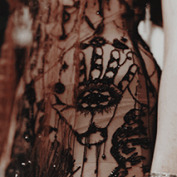







f/f february: branwen & the queen of sheba
requested by anon
#branwen#welsh mythology#queen of sheba#biblical mythology#mythedit#*#mythmoodboard#fffeb#ffmyth#mine
61 notes
·
View notes
Text
biblical asteroid observations
these observations are completely hypothetical. they are based on my (the those closest to me's) experiences with each aspect/ placement! please don't take everything i say as predestined, astrology is possible outcomes not guaranteed ones. this is just a starting place for when examining singular objects in an entire galaxy (these are not the only asteroids in affect for you). take what resonates and leave what doesn't!

☁︎ aries (1°, 13°, 25°) and scorpio (8°, 20°) asmodeus (2174) people have a strong sexual energy
☁︎ 6h asmodeus (2174) people have a tendency to see the good in everyone around them and think they can/will change but it just leave them resentful of others - ALTERNATIVELY, they could be a workplace princess/prince where everyone feels the need to do things for them
☁︎ asmodeus (2174) negatively aspecting uranus placements have an aversion to inconsistency and tend to be clingy partners
☁︎ asmodeus (2174) trine chiron people are unlikely to hurt people the way that others hurt them
☁︎ air bathseba (592) (degree and/or sign) people get a lot of social attention from others - the longer they talk with others the more people become intrigued by them
☁︎ 7h bathseba (592) placements often experience a love/lust story/scandal like her's
☁︎ bathseba (592) positively aspecting the planet that rules your 6h, the moon, saturn, neptune, and/or chiron likely enjoy baths or at least have a long beauty routine
☁︎ 9h lacrimosa (208) people often have a religious wound/burden or struggled emotionally in college
☁︎ lacrimosa (208) negatively aspecting saturn people might have a hard/complicated time mourning their father
☁︎ lacrimosa (208) positive aspecting venus and/or neptune people often believe that their higher purpose in life revolves around loving another person
☁︎ leo (5°, 17°, 29°) lucifer (1930) individuals are often extremely charismatic
☁︎ scorpio (8°, 20°) lucifer (1930) individuals often intimidate others and hunger for power in the area of life the asteroid sits
☁︎ lucifer (1930) -mc aspects often become leaders of an empire
☁︎ libra (7°, 19°) and pisces (12°, 24°) salome (562) people tend to look innocent yet say eerie things
☁︎ salome (562) negatively aspecting mars individuals tend to have bloody motives and are often very vengeful
☁︎ salome (562) -mc aspects often have the power to demand and get what they want
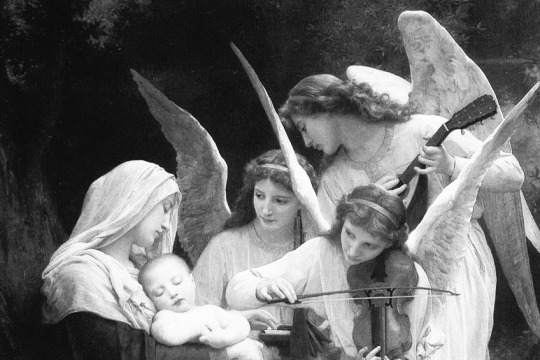
like what you read? leave a tip and state what post it is for! please use my "suggest a post topic." button if you want to see a specific post or mythical asteroid next!
click here for the masterlist
click here for more biblical myths & legends
want a personal reading? click here to check out my reading. options and prices!
© a-d-nox 2023 all rights reserved
#astrology#astro community#astro placements#astro chart#asteroid astrology#asteroid#natal chart#astrology tumblr#astro notes#astro content#astroblr#astro observations#astrology notes#astro posts#biblical#biblical mythology#asmodeus#asteroid2174#bathseba#lucifer#lacrimosa#asteroid592#asteroid208#asteroid1930#salome#asteroid562
166 notes
·
View notes
Text
The Last World: Dark Fantasy novel concept inspired by Dark Souls and the bible:
The God of the world grew to hate the inhabitants of his creation, and so he brought down a cataclysm to destroy them, so that he might repopulate the Earth. But centuries after the cataclysm, four cities still remain. Growing tired of waiting for the cities to die out on their own, God sent down a slayer in the form of a mute soldier made of bronze, clay, and sand.
The Soldier washes up on the shores of Sidon, another survivor city that a few decades earlier was defeated by the others. They're found by Magenel, the last knight of Sidon, still patrolling its now empty corpse-strewn beaches. Initially thinking the Soldier an enemy, Magenel learns through a vision about the Soldier's mission to avenge Sidon by slaying its enemies. And so he joins them on their quest.
First they must leave Sidon through the haunted bridge, where the remnants of 100,000 dead soldiers cling on to life to stop anybody from crossing. Once they make it to the mainland they head to Jericho.
The Living Walls of Jericho, reinforced with the bodies of the city's inhabitants, try to stop them. But they sneak through the living city's lungs and veins into its heart, where they slay its king. They then run away as the city, long merged with its monarch, collapses around them.
Next they travel to the twin cities of Sodom and Gomorrah, where time stands still. Long ago, the cities violated a treaty of mutually assured destruction against one another. Thankfully, just in time the mages of both cities activated a spell to hold time in place to prevent the destruction from raining on both cities. The Soldier and Magenel try to attack the time mages directly, but they're caught and defeated, separated through time.
The Soldier is sent back in time to the day of the mutually assured destruction. They try but cannot defeat the forces of Sodom and are trapped in the city's dungeons. There they help incite a riot using visions of the city's future. This causes the visions to come true, and soon the treaty of mutually assured destruction is broken. The day of destruction arrives. The Soldier is then sent back to the present. Or so they think.
In truth they're sent too far forward by decades. The Soldier travels to the city of Gommorah where Magenel has been fighting alone all this time. Helping him, together they defeat the time mages, ending the time freeze and escaping back in time to the present to witness both cities destroyed. Magenel then reveals that in those decades he was trapped in Gomorrah he learned things, including the Soldier's actions in the past. He questions why the Soldier didn't try to change things for the better. He decides to leave for the final city, Babylon, on his own.
After a long time wandering through the desert, the Soldier arrives at Babylon. The city is home to the refugees of all the world, who all work as builders on the city's central tower. They hope that by reaching the heavens, they can escape their hellish existence on Earth. The Soldier fights through Babylon's defenses, that are well prepared for them.
They rise floor by floor, defeating the challenges and obstacles put to them by Babylon's leadership. For each obstacle they overcome, a piece of their armor is lost, and so they replace it with a piece of their slain enemy. By the time they reach the unfinished tower's final floor to face the king, they're a Frankenstein's Monster of different parts.
But it's not the King waiting for them at the top. He’s been long dead, a mere symbol for the people of Babylon to rally behind. The one awaiting the Soldier of God is Magenel. And he knows what the Soldier has been fighting for all this time.
He's regretful for being blind and fool thinking that he was working towards a restoration of a false past. He’s sorry for slaying his enemies, realizing that now that Babylon is dead, the hope to rebuild is truly gone. Or is it? The ingredients to start anew and the plans still exist. He could rebuild, if given the time. And he has all the time in the world. So long as he can defeat the Soldier.
And so the final battle commences. Magenel is more skilled and powerful than any enemy the Soldier faced so far. He learned the techniques of all the kingdoms and now fights for humanity's past and future. Still, the Soldier is beyond human, especially now. Magenel loses, perishes. And with him humanity's hope for redemption.
God then comes down to the tower to congratulates his slayer for a job well done before he turns him back to sand. And with the Soldier, the rest of the world dies as well, washed away into nothingness as God starts anew.
Until the next time he's displeased with his creation...
334 notes
·
View notes
Text

The Judas Passion
54 notes
·
View notes
Text
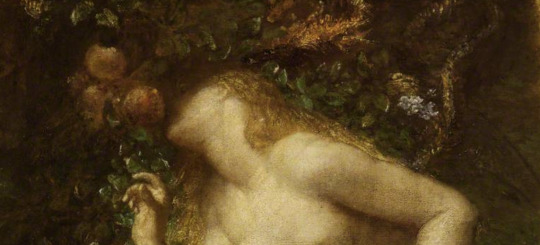








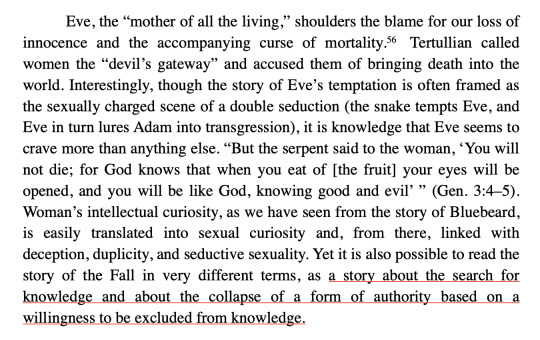

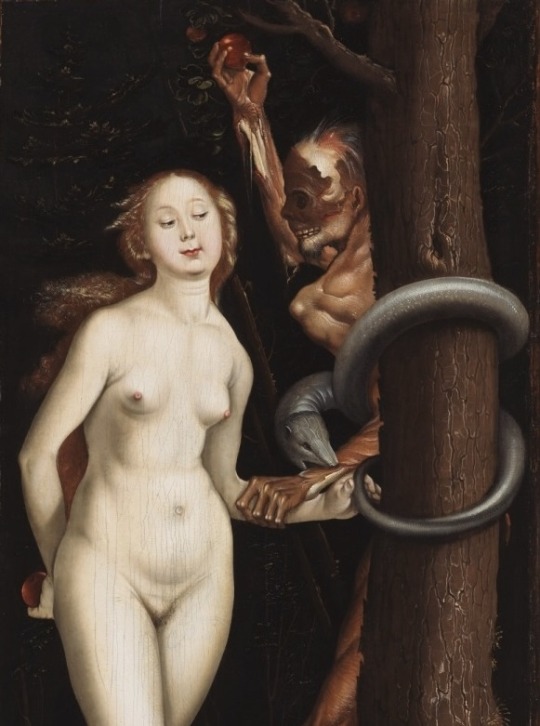
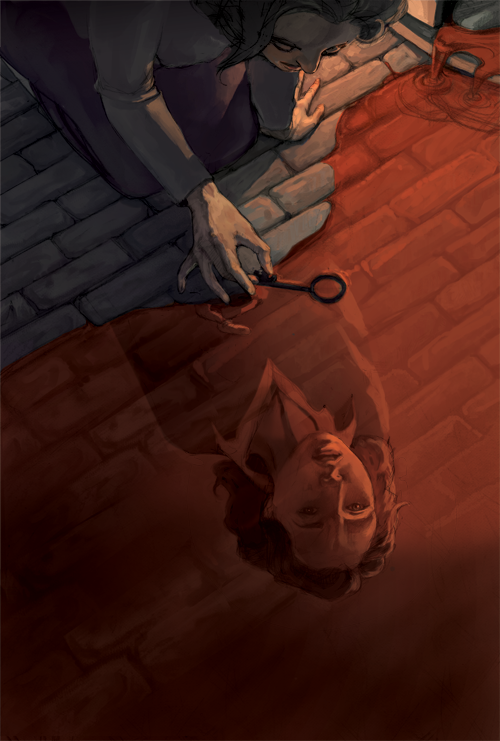


like eve before you
George Frederic Watts, Eve Tempted (detail) • Vievee Francis, "Apologia" • Edmund Blair Leighton, The Keys (detail) • Maria Tatar, Secrets Beyond the Door: The Story of Bluebeard and His Wives • Angela Carter, "The Bloody Chamber" • Heinrich Aldegrever, Adam and Eve • Gustave Doré, Illustration for "Blue Beard" • Paul Dukas, Ariane et Barbe-bleue • Glen Duncan, I, Lucifer • Hans Baldung Grien, Eve, Serpent and Death • Erika Steiskal, Illustration for "The Bloody Chamber"
#web weaving#bluebeard#fairytales and folklore#fairytaleedit#angela carter#the bloody chamber#vievee francis#maria tatar#glen duncan#gustave doré#biblical mythology#eve#it is the key that leads to the kingdom of the unimaginable#AND RENDER ME MORE EQUAL!#there really are so many interesting ways to read through this tale but the eve connections specifically jumped out quite often#not my most coherent set but you get it right! all this to say that eve (and her literary descendants) did nothing wrong!#I can't believe this has been in my drafts for years at this point. lol#spring cleaning time etc
372 notes
·
View notes
Text
The story of the first people begins in Genesis 2, when God creates Adam, the first human being. The first Adam is a very simple and uncultured being, so simple that in the quest to find Adam a "suitable companion," God creates the animals. At this early point in Adam's development, God can entertain the notion that the animals might be fit companions for the lone Adam. God brings each animal to Adam, and Adam takes notice of each and gives it a name. "But for Adam he didn't find a suitable companion." God then creates woman.
The nature of humanity changes drastically after the creation of Eve. In response to the serpent's revelation that eating the fruit of the tree of knowledge would make her more godlike, she eats, and by doing so she acquires the knowledge of things—cultural knowledge. In this way, Eve wrests knowledge from the realm of the divine, takes the first step towards culture, and transforms human existence. The coming of knowledge is stated very simply: “the eyes of both of them were opened and they perceived that they were naked, and they sewed together fig leaves and made themselves loincloths.” Two things have happened: not only have Adam and Eve realized that they are naked, a category they had not perceived in their childlike innocence, but, in addition, they are now able to sew themselves loincloths out of the available fig leaves. Somehow, the knowledge of this skill of sewing, the beginnings of cultural knowledge, has come with the eating of the fruit of the knowledge of all things. The "natural" state of humankind's Edenic beginnings has disappeared: humans become creatures of culture, able to make creations of their own. They leave the garden and embark on their cultural existence.
The implications of Eve's act are enormous. In a bite, she has “stolen” cultural knowledge, taking it from the sacred realm and bringing it to humankind. Almost immediately, Adam and Eve have to leave the garden of Eden: human beings leave their liminal infancy and enter the world of human reality. God then ratifies this change in their existence, and formally recognizes that they have left the animal world by providing them clothes made out of animal skins.
This story has a long history of interpretation in post-biblical Western tradition, which concentrated on the sin of disobeying God. Early post-biblical literature does not focus on this story as an account of the origin of sin, which it derives from the story of the marriage of the angels to human women, a post-Biblical elaboration of Genesis 6:1-4. From the first century B.C.E. on, the exegetical tradition sees sin originating in the Paradise story, and by the first century C.E. on, Eve is blamed for this fall. Eve is seen as the first yielder to temptation, the one who brought sin and evil into the world.
Western writers since Origen have often associated Eve with the Greek myth of Pandora, the first woman, who unleashes misfortune on humankind when she opens the forbidden box. She is, however, better compared to Prometheus, who disobeyed the gods and brought culture (in the form of fire) to humanity. Like Prometheus, Eve acts on her own initiative; like Prometheus, she transforms human existence: and, like Prometheus, she suffers as the result of her gift to humanity. However—unlike Prometheus—Eve, the Bible's first culture bearer, is human. And she is female. This depiction of Eve as culture hero has an inner coherence and logic to it, for Eve's role in this primeval scene is the woman's role in the life of human beings, and that of the goddesses of the ancient Sumerian pantheon. The goddesses are figures of culture and wisdom just as women are the first teachers of cultured existence, the transformers of raw into edible, grass into baskets, fleece and flax into yarn and linen and then into clothes, and babies into social beings. They are the mediators of nature and culture in daily life, and Eve the first woman is the first transformer who begins the change from "natural" simple human beings into cultural humanity.
-Tikva Frymer-Kensky, In the Wake of the Goddesses: Women, Culture, and the Biblical Transformation of Pagan Myth
71 notes
·
View notes
Text
Lucifer the Star, created with the purpose of having an Ego to match God's, slighted when the kingdom he was promised was given to another, fought against unfairness, doomed from the start to be the Necessary Evil, doomed to believe he was given the choice of Rebellion.
Cain the First Murderer, the Tiller of the Earth, the First Gravetender, cursed to be the first to set death upon humanity, created with jealousy in his heart that swayed his hand to strike his brother, doomed from the start to be the Necessary Evil, doomed to believe he was given the choice of Killing.
Judas the Betrayer, known by the Son he would betray, asked to follow for the purpose of becoming martyred for a martyr, doomed from the start to be the Necessary Evil, doomed to believe he was given the choice of Reconsideration.
78 notes
·
View notes
Text
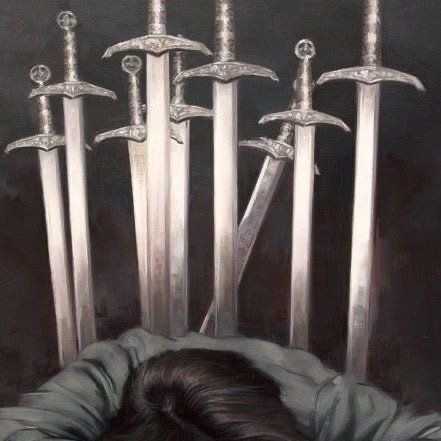





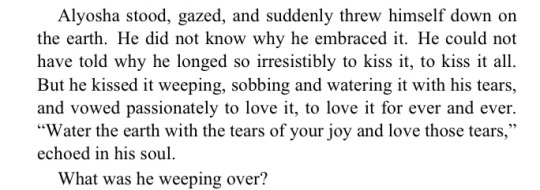
a moodboard for prophets
#moodboard#uhhhh what would I tag this as#biblical mythology#medievalcore#the brothers karamazov#angelcore
446 notes
·
View notes
Text
can Jesus and Judas be considered doomed yaoi
#cal.txt#religious stuff#religious mythology#biblical mythology#jesus and judas#Jesus Christ#judas iscariot#doomed yaoi#reading about the kiss of judas god and like…. idk girl .. Jesus predicted his own narrative betrayal and still loved his friends …#seems pretty doomed to me#christianity#renaissance art#religious art#not gonna elaborate on what this is about#you’ll probably see soon enough maybe . idk . I don’t make the rules I just abide begrudgingly by them
88 notes
·
View notes
Text

Lorenzo Bonechi (1955-1994) — The Angel and Jacob [tempera on paperboard, 1994]
231 notes
·
View notes
Text








Asherah/Athirat/Elat = Mother goddess, queen of heaven, goddess of fertility, lady of wisdom, goddess of the seas, the creator of the gods together with the god El, queen of the gods, the one who walks on the sea, patron saint of sailors and fishermen
Athirat is a powerful Goddess, and the other Gods often ask Her to help them, or to try to influence her husband El for their good. As guardian of Wisdom, She is the one who chooses the successor of Aleyin (an aspect of Ba'al as the God of dying vegetation) and, after his death, She instructs Anat in the proper ritual necessary to ensure the fertility of the vines.
Like Ashtart, Athirat is associated with the lion. She is usually shown as a nude Goddess with curly hair covering her breasts with her hands. She is also associated with the snake, and an alternative name for Her is Chawat, which in Hebrew translates as "Hawah", or in English "Eve"; so She may well be the root of the biblical Eve. Like the Carthaginian goddess Tanit, whose name means "Serpent Lady", Athirat was represented as a palm tree or pillar with a snake coiled around her, and the name Athirat derives from a root meaning "straight".
Athirat is associated with the Tree of Life, and a famous ivory box lid of Mycenaean finish found at Ugarit, dated 1300 BC, shows it symbolically representing the Tree. She wears an elaborate skirt and jewelry, and although she is topless, her hair is delicately styled; She is smiling and in her hands holds sheaves of wheat, which she offers to a pair of goats.
#history#Asherah#asherah goddess#asherah#Goddess#canaanite religion#canaanite mythology#Phoenician mythology#mythology#biblical#biblical mythology#athirat#Mother#Biblical goddess#pagan#God's wife#El'wife#Wife of god
62 notes
·
View notes
Note
Hiiii🧚🏻♂️
Can u speak about asteroid lacrimosa? That intrigues me so much, I can't find almost any information. I also would love to know how it would work in synastry?
I also have lacrimosa in scorpio conjuct venus and conjuct rising in asc pc in capricorn, that could give me a nostalgic look? or suffered? people ask me if i'm ok all the time lol also have chiron conjunct asc so yea anyways?
thank u for read love your blog sorry for the lenght 🌨️
lacrimosa, our lady of sorrows - mother mary (asteroid 208)
hi, i won't be answering the aspects portion of this ask because i do not respond to asks regarding asteroids i have not covered out of fairness to others and to the asker (it is for the best that you see where i may draw from when doing interpretation). after reading the my interpretation of the myth and you are still interested in your prior question please resubmit your prior question/ask!
on to mary.
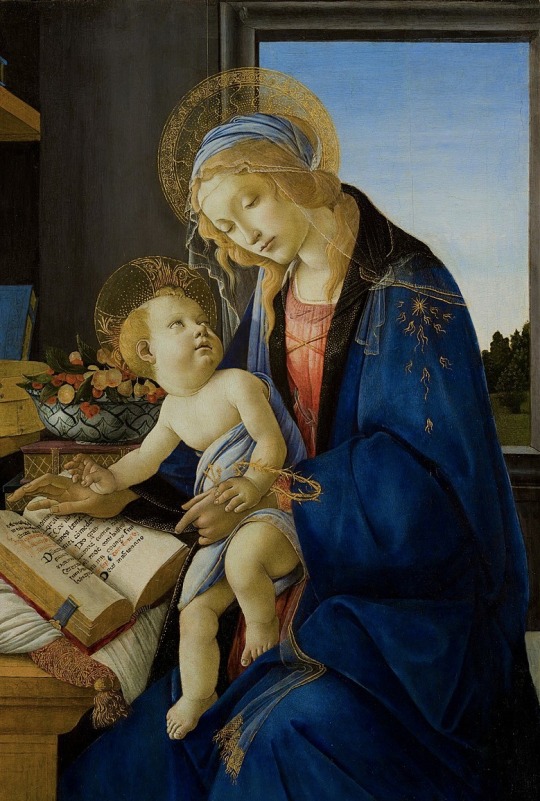
Lacrimosa, Latin for "weeping" or "teary," is most often linked to The Virgin Mary, or "The Lady of Sorrows." The appearance of the phase "Lacrimosa" is linked to the Roman Catholic Requiem sequence "Dies Irae": "Lacrimosa dies illa / Qua resurgent ex favilla / Judicandus homo reus. / Huic ergo parce, Deus: / Pie Jesu Domine / Dona his requiem. Amen." In English this roughly translates to: "Tearful is the day / When risen from ashes / Guilty men are to be judged. / Spare him, God: / Pious (righteous) Jesus / Grant them rest. Amen." As a mini crash course: Mary is Christian derived figure referred to as St. Mary, the Virgin Mary, Miriam, Maryam, second Eve, the immaculate one, etc. In the Biblical section the book of Luke, Mary is visited by an angel while she is engaged to be married to Joseph, who is a descendant of Abraham just like Mary herself. The angel tells Mary that God has favored her and she is to give birth to God's son, whose name will be Jesus. Mary was confused because she was a virgin - the angel stated that the Holy Spirit would be upon her. Mary told the angel that she was God's faith servant and that what the angel said would be divinely done to validate her understanding. When Mary informed Joseph that she was to have God's son he continued, as planned, to marry her because he too was a loyal servant of God. Mary would later travel to Bethlehem and give birth to Jesus. Mary and Joseph had many more children - Mary appears again in the Bible when Jesus performs His miracles and to witness His crucifixion. Which brings us back around to why is Mother Mary called "The Lady of Sorrows." Mary's title of "The Lady of Sorrows" comes from the moment of his death, as she is said to have faced intense suffering/grief during the passionate death of Jesus. IN MY OPINION Lacrimosa in your chart can represent a) where you experience heartbreak, b) where you grieve someone you look up to, c) where you are innocent and trusted with a divine purpose, and/or d) what your greatest sorrow is.

i encourage you to look into the aspects of lacrimosa along with the sign, degree, and house placement. for the more advanced astrologers, take a look at the persona chart of lacrimosa!
like what you read? leave a tip and state what post it is for! please use my "suggest a post topic" button if you want to see a specific post or mythical asteroid next!
click here for the masterlist
click here for more biblical myths & legends
want a personal reading? click here to check out my reading options and prices!
#astrology#astro community#astro chart#astro placements#asteroid astrology#asteroid#natal chart#persona chart#biblical#biblical mythology#christian bible#bible scripture#bible#lacrimosa#mother mary#asteroids#astrology notes#astroblr#astro content#astro notes#astro posts#astrology tumblr#asteroid208
36 notes
·
View notes